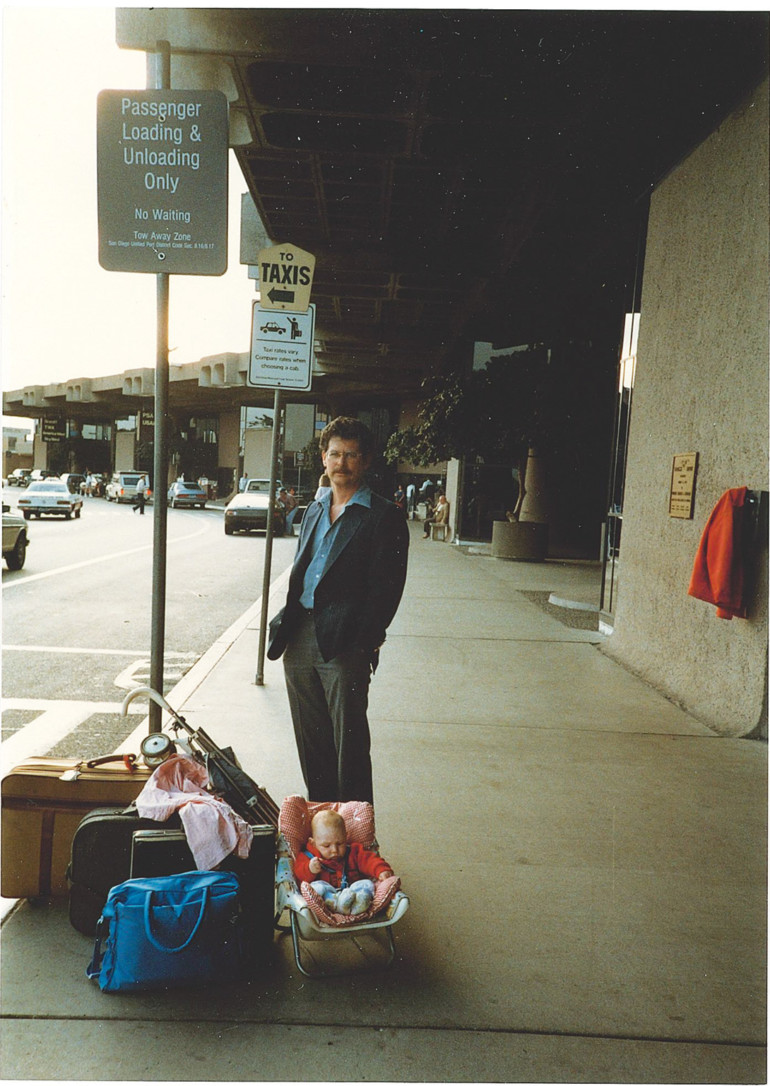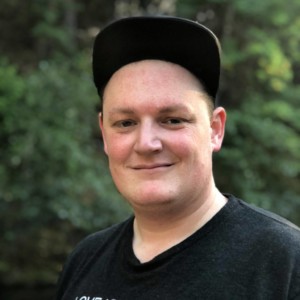It’s difficult to tell a story you don’t remember.
For most of my life, all I knew of the Trailside Killer, the notorious rapist and murderer active in Santa Cruz and Marin counties from 1979 to 1981, was that his trial had forced my father, Jay Ruskin, to spend most of the first year-and- a-half of my life apart from his family. It would be many years before I learned the predator’s actual name and even longer still before I was made fully aware of the ghastly crimes for which he was convicted.
Though now retired, my father long served as an attorney in the Marin County Public Defender’s Office. At the dinner table when I was growing up, it wasn’t unusual to hear him speaking with my mother, who was a private investigator, about felony assault and plea bargains. Though my parents certainly made all necessary efforts to keep the most gruesome matters away from my inquisitive ears, they also made a point of inviting me to take part in their work-life conversations.
When I was in eighth grade, my mom hired me in the summer to redact phone numbers from a massive stack of case files. Occasionally, family circumstances would require me to spend a workday with my father at his office. For me at that age, the bizarre splendor of Frank Lloyd Wright’s architecture, getting to choose my own lunch at the Civic Center cafeteria, and devouring every Judy Blume book in sight at the upstairs library were quite simply a dream come true.
It’s fascinating now to look back and realize that my perception of Marin was quite possibly first shaped by the trial of the county’s most infamous serial killer.
MY FATHER MOVED to Marin with his first wife, Sharon, in 1970. By the time the Trailside Killer had begun to terrorize people on Mount Tam in 1979, my dad was in the midst of an amicable divorce and living in Los Angeles with my mother.
“I have a vague memory of reading about it,” he says now. “At that time, for reasons I can’t explain, it seemed to have been the golden age of serial killers. We had the Trailside Killer up here. There was the Night Stalker, who moved from here down to L.A. while I was working down there. I was working as an appellate lawyer for the California Public Defender’s Office on felony appeals. At that time, there were trials going on for the Hillside Strangler and for the Freeway Killer too.”
What strikes him most about the killings here, he recalls, is how starkly they stood in contrast to Marin’s most compelling attributes.
“A lot of people like to live in Marin, if they can, for two reasons. One: there is very little violent crime. Two: the natural beauty and all of the trails. At that particular time, the violent crime was so bad that no one could use the trails because there was this serial killer loose. People were terrified.”
By 1985, my father was desperate to move back to the Bay Area to be closer to the son and daughter he and Sharon had together. Though they’re technically my half-brother and half- sister, we’ve always been as close as siblings can be. At that moment, however, my parents were both looking for work up north to justify the move. When no such opportunities arose, they decided to quit their jobs and pack their bags anyway.
My mother, who had worked her way up from secretary to paralegal to investigator, took a job with Dr. Martin Blinder (the forensic psychiatrist famous for suggesting the “Twinkie defense” during the trial of S.F. Supervisor Dan White). Meanwhile, my father was hoping to apply for a position with the Marin County Public Defender’s Office but was told that the only opening was a special position — one assisting the team tasked with defending the alleged Trailside Killer, David Carpenter, on five counts of capital murder.
“This was a position without benefits,” he recalls, “and it was temporary, but it seemed like it would be interesting.”
Hired on as a research attorney, my father was informed right away that a change of venue motion had already been filed. Such motions, which argue that a case has so much local publicity that finding an impartial jury would be impossible, are almost never granted. This is what Carpenter’s lead defense attorney, Frank Cox, told my father when he welcomed my dad aboard. If precedent was any indicator, Cox had every reason to believe their motion would be denied. Even if it were to be miraculously granted, he said, it would probably only mean a change of venue to somewhere in the East Bay.
The Marin County judge returned with his ruling. The venue change was granted. The trial would now take place in a new location — San Diego. Having just moved north from Los Angeles to be closer to his children, my father would now be 100 miles farther from them than he was before. Worse still, it wasn’t two kids he wouldn’t be able to see; it was three.
MY MOTHER WAS six months pregnant when my father first left for what would ultimately be a year-and-a-half-long trial. He visited every weekend, flying up from San Diego on Friday nights and back down early Monday mornings, but the arrangement created a strain. Though my dad was able to take time off when I was born in February 1987, his obligations in the trial were immensely consuming. My mother was working too, which meant that whenever my sister Jennifer, who was finishing up her senior year at Drake, wasn’t available to watch me, my mom was on her own.
Naturally, it didn’t help matters that the man my father was sacrificing so much to defend was not someone many would describe as sympathetic. Prior to Carpenter’s trial for the murder of five people in Marin, he’d already been found guilty of two murders and sentenced to death for crimes committed in Santa Cruz County.
I have always respected my father’s steadfast commitment to give his clients the best defense possible regardless of the circumstances. That’s a public defender’s professional duty, even if some people believe it should only apply to the obviously innocent. In this case, however, the responsibility weighed heavily on everyone involved.
“I woke up one Saturday down there and it felt like there was a knife in my stomach,” lead investigator Jim McFeely says about working on the case with colleagues at the time. “It turned out to be an ulcer, I believe. It was stress-related. Sometimes it felt like we were in the 4th Infantry. In a way, I tend to view these guys as old Army buddies.”
At long last, Carpenter’s trial concluded: the jury returned a verdict of guilty on all charges. It was never going to be an easy case given the vast quantity of evidence available. At the office in San Diego where Carpenter’s defense team worked, it took six file cabinets to hold all the documents related to the case. Though sentenced to death in 1988, Carpenter remains alive today. Just as my father was finally able to return to Marin County, so too was Carpenter. He is, at the age of 89, still San Quentin State Prison inmate No. C96500.
With the case finished, my father was at last finally able to return to my mom, to my brother and sister, and, in some ways, for the first time, to me.
“For five people [the murder victims],” my father tells me, “this took their lives. Their families were devastated. Then there are all of the people who couldn’t hike because they were terrified. You were impacted too, though. As the result of the need for a venue change, your father was down in San Diego for the first year-and-a-half of your life. He’d just come home on the weekends. You don’t remember that but you’ve heard about it. Your mother was not pleased. Let’s put it that way.”
Shortly after my father came back to Marin for good, my mother, Denise Garety, partnered with fellow investigator Jack Rogers to form their own agency. Though they expected to investigate mainly civil cases, they quickly received their first criminal case. It involved a defendant named Zohelin Diaz. It was a death-penalty-eligible murder case as well.
My understanding of Marin will always be built, at least in part, on the strange relationship between the county and crime. Some of that was situational, but a larger piece was the simple fact that my parents cared a lot about justice. They worked to ensure it was always present in my home, and, to the best of their ability, in the many challenging cases they worked on over the course of their careers.
The Trailside Killer will always remain a piece of my personal story, not because of the heinous crimes he committed, but because his trial taught me everything about my father that I’d ever need to know. My dad was dedicated to his client but also to his family. He risked a lot to do what he thought he was right. Nowadays we like to talk about these things on long hikes. The trails don’t seem as daunting as they once did. In fact, they feel like home.
Clippings courtesy of Marin County Free Library/Anne T. Kent Room.
Zack Ruskin writes on music, cannabis, and culture. His bylines include Vanity Fair, Billboard, Entertainment Weekly, Variety, Merry Jane, and the San Francisco Chronicle. He lives in San Francisco with his wife, Danielle, and their cat, McCovey.



